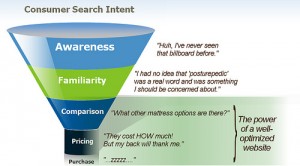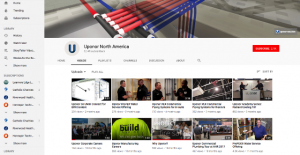
Strong relationships with your organization’s stakeholders will go a long way in helping you forecast and identify problems, as well as formulate and roll out effective solutions. However, these kinds of relationships are not built overnight. Aside from identifying your key stakeholders and learning the truth about them, you also have to keep the connection by making them feel understood. Once you have already established a connection with your stakeholders, maintaining it will largely depend on assuring them, on a deeper level, that you care about them and also have their best interests in mind. To demonstrate this, you need to learn about and use specific social intelligence skills.
Help Your Stakeholders Feel Understood Using 3 Social Intelligence Methods
To facilitate a better exchange of thoughts and ideas, you can employ specific, tried-and-tested methods whenever you engage with your key influencers informed by social intelligence. Social intelligence refers to the strategic capacity to evaluate and influence other people’s emotions and relationships. Social intelligence-based methods will allow you to break the ice as well as strengthen the trust between your organization and your stakeholders. It’s often hard to do so due to dangerous judgment errors called cognitive biases, but you can use research-based strategies to notice such blind spots and overcome them.
A few months ago, I met with Steve, a coaching client of mine who was, at the time, coming into a mid-size manufacturing company as a new CEO hired from the outside. He had already met most of the members of the current C-suite during a company-wide event but he was looking to build strong relationships with them as soon as possible by meeting with them one-on-one.
Steve approached me for advice because his meetings weren’t going well. While he tried to be cordial and gracious, his attempts weren’t received warmly and instead were met with defensive and evasive responses. He suspected that the current C-suite was wary of him because he was hired externally, while they had all worked together for over a decade, and would have much preferred to have one of the old-timers be put in the leadership position.
He wasn’t sure what to do. Should he work on winning their trust or work on getting rid of the current C-suite and bringing in some fresh faces?
I convinced Steve not to jump to conclusions and to keep an open mind about the current executives. After all, he can always fire them later. First, he needed to try to break the ice and only after that can he start to really connect and win their trust. And after that, he can evaluate who should be on the bus, and who needs to get off the bus.
I advised him to use the following methods so that he can foster a sincere and welcoming environment when meeting with the executives.
1. Empathetic Listening
Go beyond the surface level when trying to understand your key influencers. This means that when they are communicating with you, you should listen to what they mean and not just what they say. Your goal is empathy, the skill of understanding what other people feel. Focus not only on their message’s content, but also on their tone and body language. By doing so, you will be able to figure out what they mean and what explains their feelings.
One of the best ways to demonstrate empathy while engaging with your key influencers is to show them that you are paying full attention to them and nothing else, through:
(a.) Nonverbal signals of attention, which includes:
- Constant eye contact (casual, not intense)
- Keeping your feet and shoulders pointed to them
- Keeping your arms open, if you are sitting
- Standing straight and not slouching, if you are standing
- Smiling, nodding, and using hand gestures at appropriate times
- Duchenne smile, not fake smile (includes eyes in smiling)
(b.) Non-interruptive verbal signals of attention – includes saying “uh-huh”, “ok”, “go on”, etc., at appropriate times.
Steve decided to start by meeting with the CFO Claire for an informal getting-to-know-you and catch-up chat. Initially, Claire’s responses were guarded and she did not give a lot of information about herself and the company. However, by nodding when Claire was speaking, using a Duchenne smile, and employing non-interruptive verbal signals of attention, Steve was able to express warmth and sincerity. Gradually, Claire became more communicative. Steve even found out that their sons both attended the same school.
2. Echoing and Mirroring
Another way of showing that you are paying full attention is through echoing and mirroring, which includes:
(a.) Rephrasing the essence of what your key influencer is saying with your own words every one to three minutes. For example:
- “So what I’m hearing you say is ________. Is that right?”
- “You’re saying that _________. Do I have it correct and complete?”
If you have it right, the person you are talking to will be grateful that you were
paying attention. If you don’t, they will be grateful that you checked and will correct it.
(b.) Using their jargon – Notice specific words that your key influencer is using relevant to the issue, and integrate them into your echoing.
(c.) Mirror in broad terms their tone and posture. For example, if they’re speaking formally, do so as well. If they’re leaning towards you, do so as well. Just pay attention to their body language and tone and try to match it, but don’t try to mirror everything quickly. When done correctly, this will help your key influencers feel connected to you and build trust.
Going back to Steve’s meeting with Claire, he decided to keep the conversation flowing by mirroring her tone, which became a lot friendlier after he employed empathetic listening. After a few more minutes of small talk on topics ranging from conferences they attended to peers from the industry that they had both worked with, Steve lightly inquired about any pressing issues that Claire might want to share with him. Given the non-threatening environment that he was able to establish, Claire candidly shared some key issues.
3. Building Rapport
Finally, you can show your stakeholders that you understand them by building rapport.
You need to help them feel that you are on their side and that you are part of their tribe.
Without explicitly stating it, signal that you grasp their emotions, goals, incentives, values and obstacles by doing any of the following:
(a.) Express compassion (sense of caring) towards their emotions
(b.) Find points of commonality between your goals and values and theirs
(c.) Convey implicitly that you get what their obstacles and incentives are
(d.) Use humor to help bring down defenses, while keeping in mind the following:
- Avoid making fun of them or what they value
- Avoid sarcasm as it’s too often misunderstood
- Lightly make fun of yourself, as you’re the safest target
- The most impactful humor feels spontaneous. However, you can still build it in and people will still appreciate it.
- Integrate humor into your messages, both individual and broad
- Do diverse types of humor
- If you’re doing a presentation, virtual or in-person, use funny slides
Circling back to Steve and Claire, one of the issues Claire shared was the challenge of managing an understaffed department. Thankfully, Steve had done his due diligence prior to the meeting and had already noticed that Claire’s department lacked certain key people.
After Claire brought it up, Steve immediately acknowledged the problem and expressed his concern about Claire’s challenge. To further demonstrate that he understood what she was going through, he also shared some stories of his time as a struggling COO from years back, when he had to juggle multiple projects with a reduced headcount due to budget constraints.
Finally, Steve assured Claire that he will immediately look into the issue. They concluded the meeting on warmer terms.
Rapport establishes trust between you and your stakeholder. In addition, it facilitates better communication and seals the connection. Building rapport is definitely one of the social intelligence-related initiatives you should invest in because when executed correctly, it translates to both short- and long-term rewards.
About two weeks after he consulted me, Steve called me with some good news: He got in touch with Claire a week after their talk and was able to present some good options. Claire was happy to further discuss these options with him and, together, they arrived at a solution to the staffing problem.
Steve also informed me that after working with Claire on her department’s problem, the rest of the meetings with the C-level executives went a lot better. It appeared that Claire had put in a good word for him with the rest of the C-suite. From then on, Steve was able to have more open, productive conversations with his team members and his transition to being the company’s new CEO went smoothly.
Conclusion
The best way to help your stakeholders feel understood is to reach out to them with the goal of forming a lasting connection. You can achieve this by using the 3 social intelligence methods of empathetic listening, echoing and mirroring, and building rapport. By doing so, you will be able to break the ice, relate to each other, foster trust, and be confident that you can communicate openly at all times.
Key Takeaway
Form lasting connections to stakeholders and help them feel understood by using the three social intelligence methods of empathetic listening, echoing and mirroring, and building rapport.
Questions to Consider (please share your answers below)
- When was the last time you had difficulty connecting when trying to converse with a stakeholder?
- What techniques from the article might help you build rapport with your stakeholders?
- Which next steps will you take based on reading this article?
Image credit: Pixabay
Originally Published at Disaster Avoidance Experts on May 21, 2020.
Business & Finance Articles on Business 2 Community
(81)
Report Post






